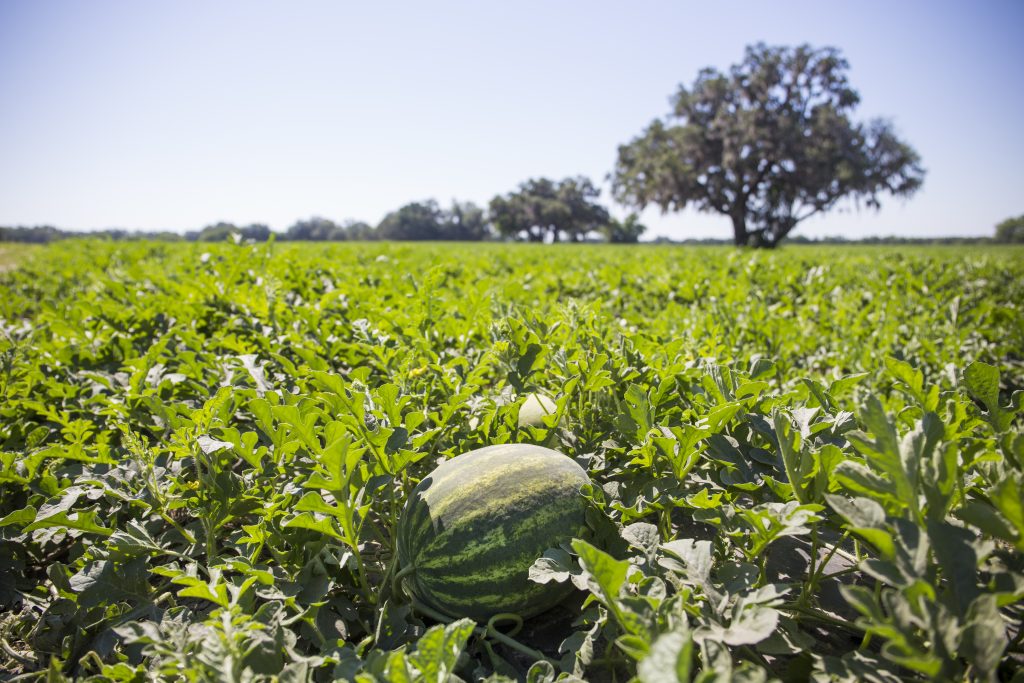By Clint Thompson
The extended delay of certain diseases occurring in North Florida watermelons was a much-needed blessing for producers. The hot and dry conditions were a big reason why.

Only last week was the first case of downy mildew observed in Levy County. Gummy stem blight pressure only became problematic within the last couple of weeks. Those diseases thrive in wet conditions, which had been noticeably absent most of the spring.
Not only does a lack of disease pressure help aid watermelon production, it saves farmers money in a time when they need it the most, said Josh Freeman, University of Florida Institute of Food and Agricultural Sciences (UF/IFAS) associate professor in horticultural science.
“Watermelons are an example where if you’ve got favorable conditions, you can stay on pretty cheap fungicides. When you start moving from Bravo and Manzate into things like Inspire Super, Aprovia Top, those get significantly more expensive. You talk about going from say, $15 an acre to $40 an acre on a spray program,” Freeman said.
“If you can stay on Bravo and Manzate, which does a good job, and they’re great protectants, if you can stay on those another two weeks, that makes a difference. A lot of growers have been. When you’re not getting rain or you’ve caught one little passing shower and then it’s been dry for three days, most of them are staying on a pretty cheap fungicide program. It’s probably a week or so longer than what they would normally do. That makes a difference in a crop.”
Watermelon harvests are already under way in the Suwanee Valley region.










